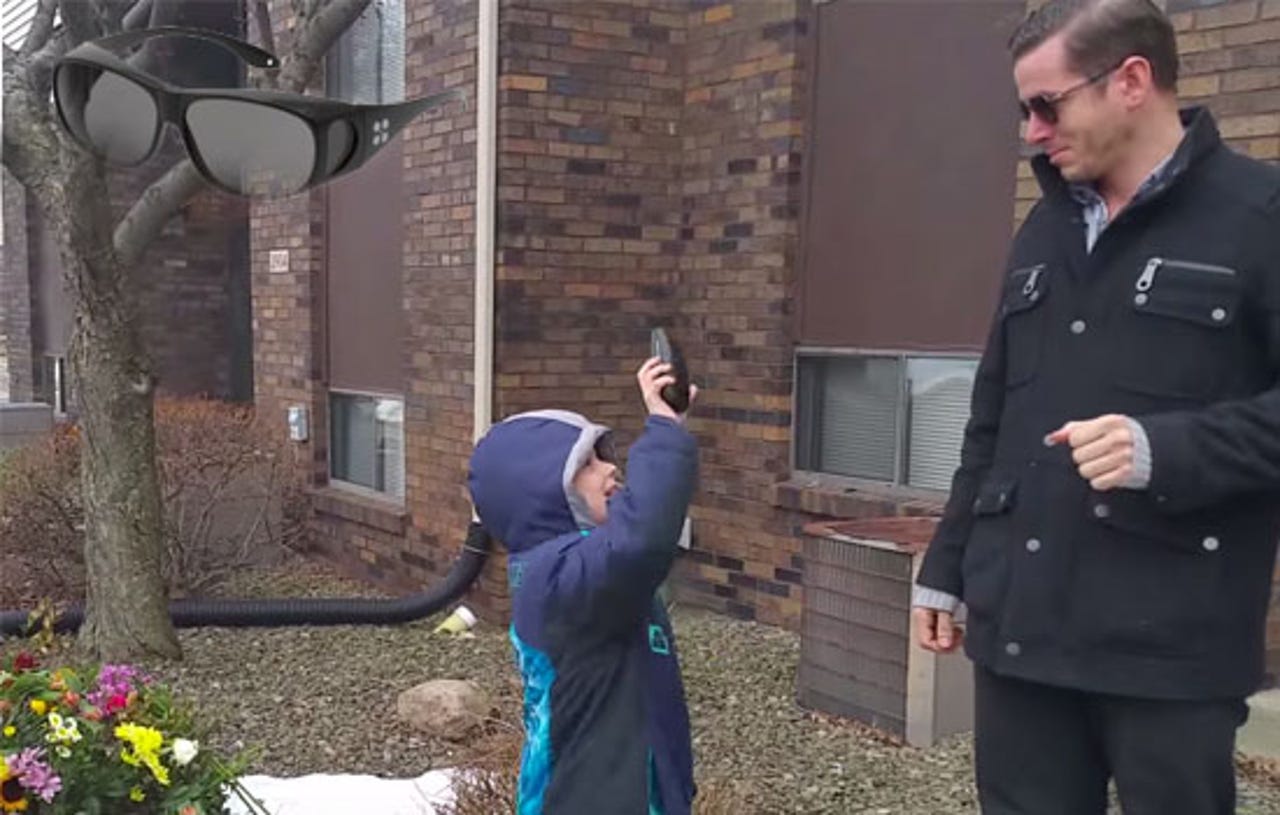Innovative technology which makes a real difference


enChroma glasses for the colorblind
EnChroma offers a range of glasses which change how the wearer views color. The glasses work on improving red-green color blindness through special lenses and filters which separates overlaps between different cone signals -- which control how we interpret color. By separating these, the enChroma team says better color vision is possible for wearers. The glasses are not a cure, but by the look of many YouTube videos recording users' first times experiencing vibrant color with enChroma, they do open a new world for those with color viewing deficiencies.
3D printing and prosthetics
Beyond the basics, prosthetics are known to be hideously expensive. Components and customization is not cheap -- or, at least, before the increased adoption of 3D printing. 3D printing, together with design and mapping software, allows for the printing of three-dimensional objects which are precise and can be made with a variety of materials -- many of which that are far cheaper than traditional prosthetics material.
There are countless cases of research and projects which combine prosthetics with this type of printing, allowing those who could not afford anything beyond the absolute basics to have a wider variety of movement back within their missing limb.
Emma Lavelle, a young girl born with undeveloped arms, did not have the strength for a traditional exoskeleton which would grant her more movement -- until 3D printing was used to create a lightweight model for her out of plastics. In more recent times, student Troy Baverstock has created a 'smart leg' prosthetic with inbuilt medical sensors, and a global network of volunteers are printing and distributing $30 - $50 wrist and elbow prosthetics for children.
Advancing Prosthetics
3D printing can result in more affordable prosthetics for many people, but there is also advanced research happening which aims to give amputees not only better control and manipulation of artificial limbs -- but allow them to 'feel' again. Researchers at the Defense Advanced Research Projects Agency (DARPA) have been conducting tests this year with a 28-year-old male who has been paralyzed for a decade after suffering a spinal cord injury, and have invented a prosthetic hand which allows him feeling once more.
The hand is directly linked to the brain through wires to connect to electrodes embedded in the man's sensory cortex. Using the same neural connections as operating a natural hand, the man was able to control the prothetic and feel when he was being touched, even when blindfolded -- giving amputees hope this research can be expanded in the future.
Liftware: A tremor cancelling spoon
Lift Labs, acquired by Google, are the makers of a smart spoon which reduces frustration and challenges faced by those with tremor-related problems trying to eat.
Sufferers of diseases such as Parkinson's can find eating eventually becomes a problem when tremors in the hands occur. However, Lift Lab's spoon senses these tremors and compensates accordingly -- stabalizing the implement in response.
View Liftware in action here.
Google's Project Loon
Google seems to have a finger in most pies these days, and Internet access is no exception. Going beyond the expansion of the super-fast broadband service Google Fiber, Project Loon is an ambitious project to deliver Internet access to remote, impoverished and difficult-to-reach regions. How is this possible? Through the use of networked balloons flying at twice the altitude of aircraft, 20km above the Earth's surface. The balloons patch up gaps in connectivity and offer speeds comparable to 3G bands.
Project Loon has been piloted in countries including Argentina, Brazil, Chile and New Zealand. Google hopes to eventually deliver Loon's LTE Web access to two-thirds of the world's population via mobile network operators.
Nano-architecture
Nano-architecture might not sound very interesting, but the concept has the potential to turn everything we assume about materials, architecture and construction on its head. While you'd be forgiven for assuming the heavier the material the stronger it is likely to be, researchers at MIT, Caltech and other institutions are working out how to fabricate materials through complex webs and lattices to improve strength and flexibility while keeping things light.
Not only could tampering with architecture at the nanoscale result in energy use reduction and less wastage -- an important issue in today's world -- but this research could also result in better conduction, batteries, insulation and lighting emission, potentially transforming everything from the device in our pocket to our home's building materials.
Drones
Drones, otherwise known as unmanned aerial vehicles (UAVs), are controversial. They are used for military purposes and surveillance, but they are also used for beneficial applications. Drones can be used in farming and land surveys, by insurance companies unable to reach areas involved in natural disasters, and more importantly can take the place of humans when it comes to dangerous jobs such as surveying risky environments, quickly delivering medicine or perhaps organs -- one day -- and even for use as delivery guys, if you follow research being conducted by both Google and Amazon.
IBM Watson and health
IBM Watson, while most well-known for its appearance on quiz show Jeopardy, is a supercomputer which has the ability to boost research and the general improvement of healthcare and education through data analytics. The firm's Watson Health unit is being expanded into personalized medicine via DNA translation and the input of electronic health records, which can grant more patients the option of DNA sequencing by providing the power to do so -- and therefore promotes customized treatment for those with cancer and other serious conditions. Given this research and data, Watson's findings will pave the way for better treatment, sequencing and the understanding of DNA -- a cornerstone for modern healthcare.